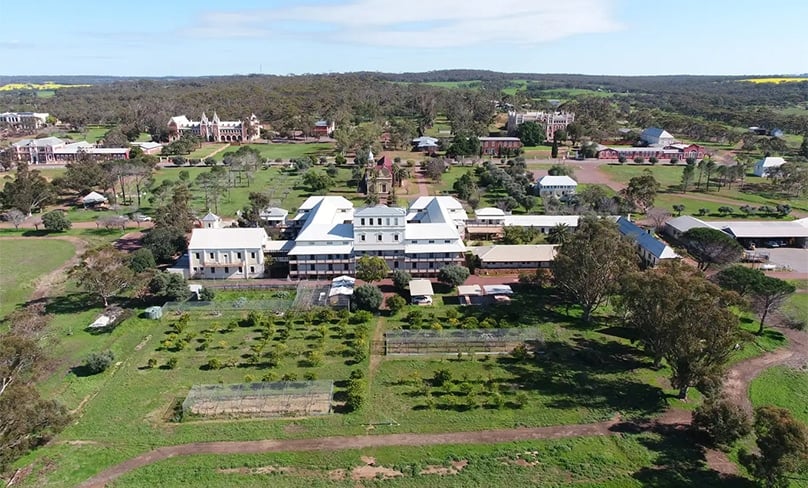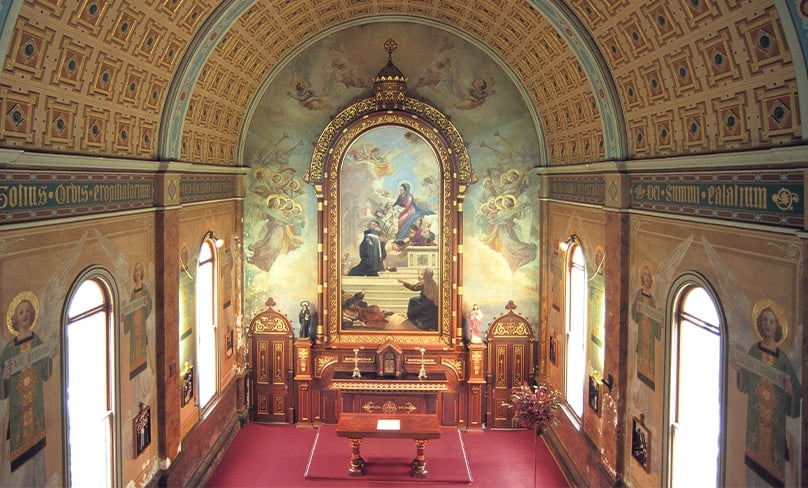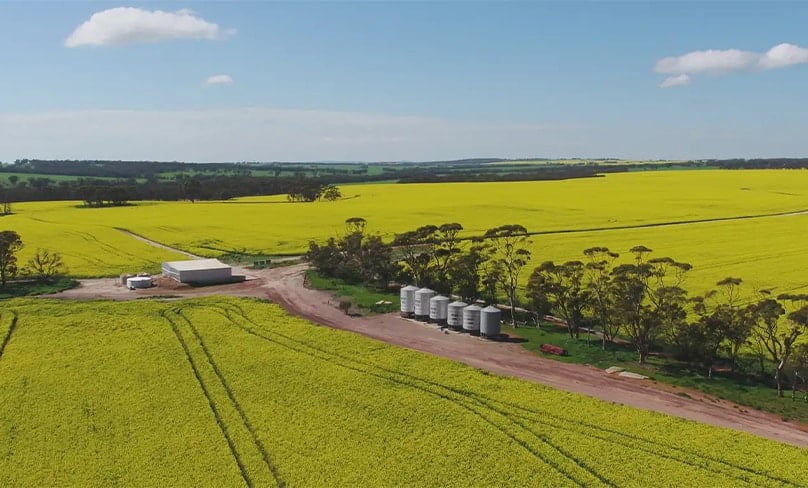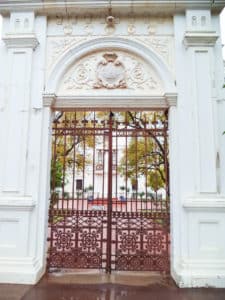
When the Benedictine Monastery town of New Norcia, located about an hour and a half’s drive north of Perth, announced it was putting almost all of its agricultural land up for sale to fund the community’s redress owed for historical child sexual abuse, the news came as a shock to Western Australians regardless of whether they described themselves as religious or otherwise.
New Norcia, founded by Spanish Benedictine monks in 1847 is as well known in Western Australia as Taronga Zoo is in Sydney and New South Wales.
It’s a major tourist destination with busloads of people turning up daily to wander the tiny township which has grown up around the monastery and to take in some of its remarkable sights, such as an art gallery sitting in the middle of the bush full of high European art donated to the monks by, among others, the Spanish Royal family.
“In WA, almost everyone knows something about New Norcia, especially the tale of how Dom Rosendo Salvado, the founding Abbot, walked the entire distance from his monastery’s foundation to the Swan River Colony.”
A hotel originally completed for parents of rural families visiting their children boarders at the Monastery’s two schools – St Gertrude’s and St Ildephonsus – looks like something from a movie with its wide collonaded verandahs, the perfect place for spending a hot afternoon quietly sipping chilled drinks. It closed earlier in 2021.
A museum also attracts visitors with its curated displays of artefacts from almost two centuries of monastic life, while the schools chapels are extraordinary masterpieces of liturgical and church art.
Across the other side of the Great Northern Highway running straight through the centre of the township – estimated population of less than 100 – lies the picturesque Spanish architecture of the monastic Church and its monastery where generations of monks have lived, prayed and died.

In WA, almost everyone knows something about New Norcia, especially the tale of how Dom Rosendo Salvado, the founding Abbot, walked the entire distance from his monastery’s foundation to the Swan River Colony and with the support of the Colony’s Governor, put on a one-man piano concert that saved the future of the embryonic community of monks by raising enough money to purchase food for the community.
For decades, the monastery and its hostel have been a destination for WA Catholics as a major retreat centre and as a centre of spirituality.
Now it is selling almost 8000-hectares of prime farm land on the Victoria Plains for an asking price estimated to be approximately $40 million. The news was the lead story on Page One of the state’s daily newspaper, The West Australian.
“Due to its liabilities relating to redress for historical abuse, the Benedictine Community of New Norcia has made the difficult decision to sell the majority of its farm.”
While the farmland is for sale, the township itself with its monastery, church, an old mill, a hotel, general store and post office are not part of the sale.
Once one of the jewels in the crown for Catholics in Western Australia, the Order’s 175-year history has been permanently scarred by the findings of the Royal Commission into Institutional Responses to Child Sexual Abuse during the period between the 1950s and 1970s.
It established the number of priests who were perpetrators in the Catholic Church in WA was much higher than the national average.

The report found seven per cent of priests from all Catholic Church authorities who ministered from 1950 to 2010 across Australia were accused of child sexual abuse, but for the Benedictine Community, that number was more than triple that at 21.5 per cent.
“Due to its liabilities relating to redress for historical abuse, the Benedictine Community of New Norcia has made the difficult decision to sell the majority of its farm,” a statement from the Community said on 14 September.
“It is anticipated that this sale will generate sufficient capital to meet our commitment to redress, and enough capital injection into the organisation to sustain New Norcia well into the future.”
“The report found seven per cent of priests from all Catholic Church authorities who ministered from 1950 to 2010 across Australia were accused of child sexual abuse, but for the Benedictine Community, that number was more than triple that at 21.5 per cent.”
Often referred to as a “little piece of the Mediterranean in the Australian bush,” New Norcia was settled in 1847 as a mission to the local Aboriginal people by Bishop Salvado, who died in 1900 and whose body is still interred in the Abbey Church.
Named after Norcia in Italy, the birthplace of St Benedict, it has had many purposes including as a mission, a monastery and as a provider of education.

The renowned Wheatbelt region, known for its high rainfall of about 520 millimetres a year, quality soil and proximity to Perth, is considered prime farm land.
It is watered by about 50 dams, a bore with a solar pump and a watering system which pumps to gravity-fed troughs, in addition to two fertiliser sheds, a machinery shed and a six-stand shearing shed.
At its height the monastic numbered 70 men, many of them recruited over generations from Spanish monasteries but today just six Benedictine monks continue to occupy the monastery and can be seen moving quietly amongst the historical buildings on their way to pray together seven times a day.
Tours are operated daily by the Friends of New Norcia, who also organise the accommodation in the various buildings including the monastery retreat.
An Art Gallery houses one of the largest collections of moveable religious art in Australia, both old masters and contemporary pieces are featured by Spanish and Italian Masters as well as Australian artists. Its collection includes a Raphael and numerous 16th and 17th Century works.
“Named after Norcia in Italy, the birthplace of St Benedict, it has had many purposes including as a mission, a monastery and as a provider of education.”
New Norcia is increasingly respected in Australian culinary circles for its quality bakery (built in 1886) offering bread, nutcake and biscotti as well as maintaining olive oil production and locally made wines, port and ale which can be purchased at the community or from selected outlets.
Used primarily over the last century for livestock grazing and cropping and described as an “extremely rare” offering, it is expected to attract strong local and outside interest, both from families and corporate investors.
